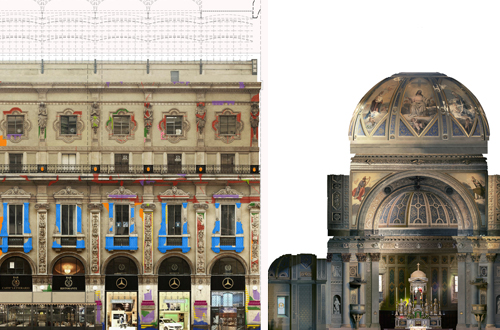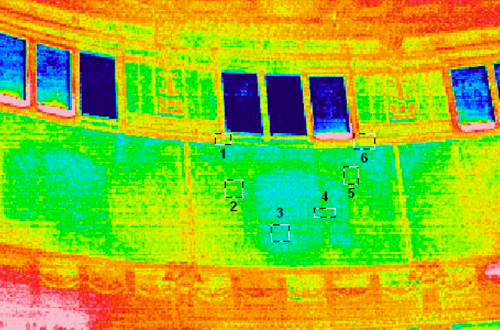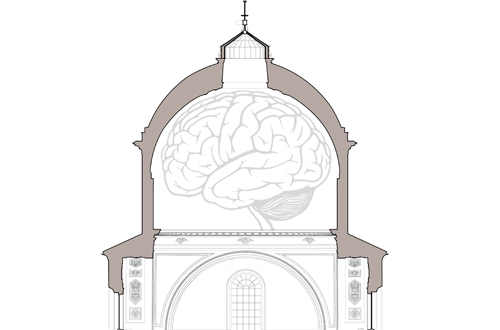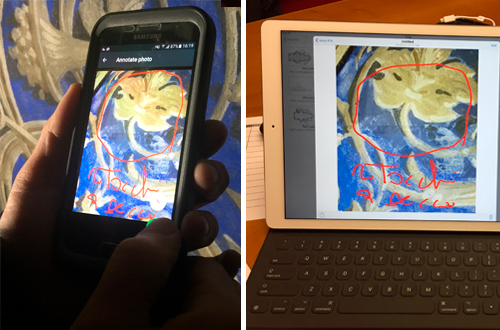IL RUOLO DELLE TECNOLOGIE, E IN PARTICOLARE DI QUELLE DIGITALI, NEL MONDO DEL RESTAURO E DELLA CONSERVAZIONE STA DIVENTANDO SEMPRE PIÚ RILEVANTE. PER QUESTO ABBIAMO DECISO DI GUARDARE A QUESTO MONDO CON GRANDE ATTENZIONE.
Si pensi solo all’utilizzo dei droni, dei sensori, delle tecnologie laser. Tantissime sono le strumentazioni e i dispositivi che consentono importanti sviluppi operativi e nuove opportunità anche nell’ambito del restauro. Strumenti che consentono inedite possibilità, che moltiplicano le competenze e le potenzialità di chi opera. In quest’area del sito parliamo delle applicazioni tecnologiche che abbiamo adottato, delle opportunità che esse possono creare e delle soluzioni che, grazie ad esse, siamo in grado di proporre.
Gasparoli sta migliorando in modo consistente la propria dotazione hardware e software per ottimizzare le attività in cantiere. Le comunicazioni tempestive e il controllo da remoto, la gestione computazionale in digitale, gli scanner per il rilievo e la stampa 3D sono alcune delle innovazioni tecnologiche che l’Azienda mette a disposizione dei propri Clienti.

La fotogrammetria digitale automatica e il rilievo laser scanner sono metodologie che permettono di elaborare un modello tridimensionale partendo da fotografie digitali. Si tratta di tecnologie di cui Gasparoli si avvale per una precisa e dettagliata analisi delle condizioni di conservazione, di registrazione e di misurazione degli interventi.
I termogrammi forniscono mappe termiche che mostrano, con gradazioni di colori, la temperatura delle superfici dei materiali e l’eventuale presenza di fenomeni di umidità, distacchi, di rivestimenti dal supporto, dispersioni termiche.


Il settore della manutenzione del patrimonio culturale ha raggiunto un significativo grado di maturità nei principi di riferimento e nelle procedure operative. Parallelamente si assiste ad un sempre più frequente uso di sistemi di sensori per il controllo digitale e la gestione degli edifici, i cosiddetti smart-building.
Il programma di ricerca “Smart Preservation” è orientato ad indagare l’applicazione di tecnologie innovative nel settore dei beni culturali, al fine di monitorare parametri microambientali, meccanici e chimico-fisici rappresentativi di condizioni di rischio o di attivazione di processi di degrado per il tempestivo intervento.
La necessità di tenere continuamente sotto controllo il cantiere dal punto di vista della qualità e della produttività – soprattutto se si tratta di cantieri all’estero o molto distanti dalla Sede – ha indotto l’Azienda a mettere a punto un sistema di controllo a distanza attraverso il quale, dalla Sede o da qualunque altra postazione, è possibile fare interrogazioni e controllare visivamente l’andamento dei lavori e il livello qualitativo raggiunto. Le nuove potenzialità offerte dalle strumentazioni digitali (tablet, smartphone e relativi software applicativi) consentono una gestione in tempo reale dei processi, dei computi, del cronoprogramma, delle registrazioni contabili.


